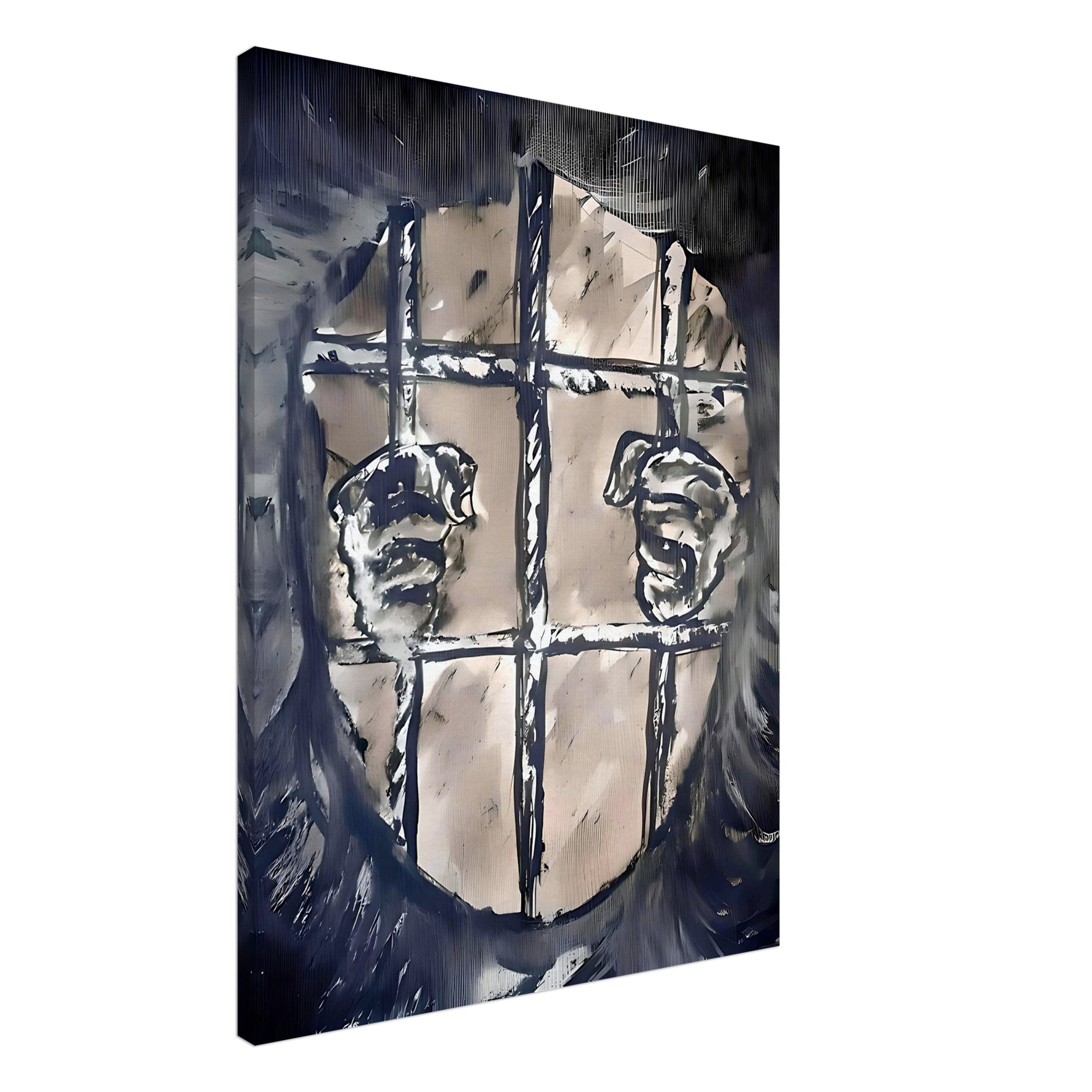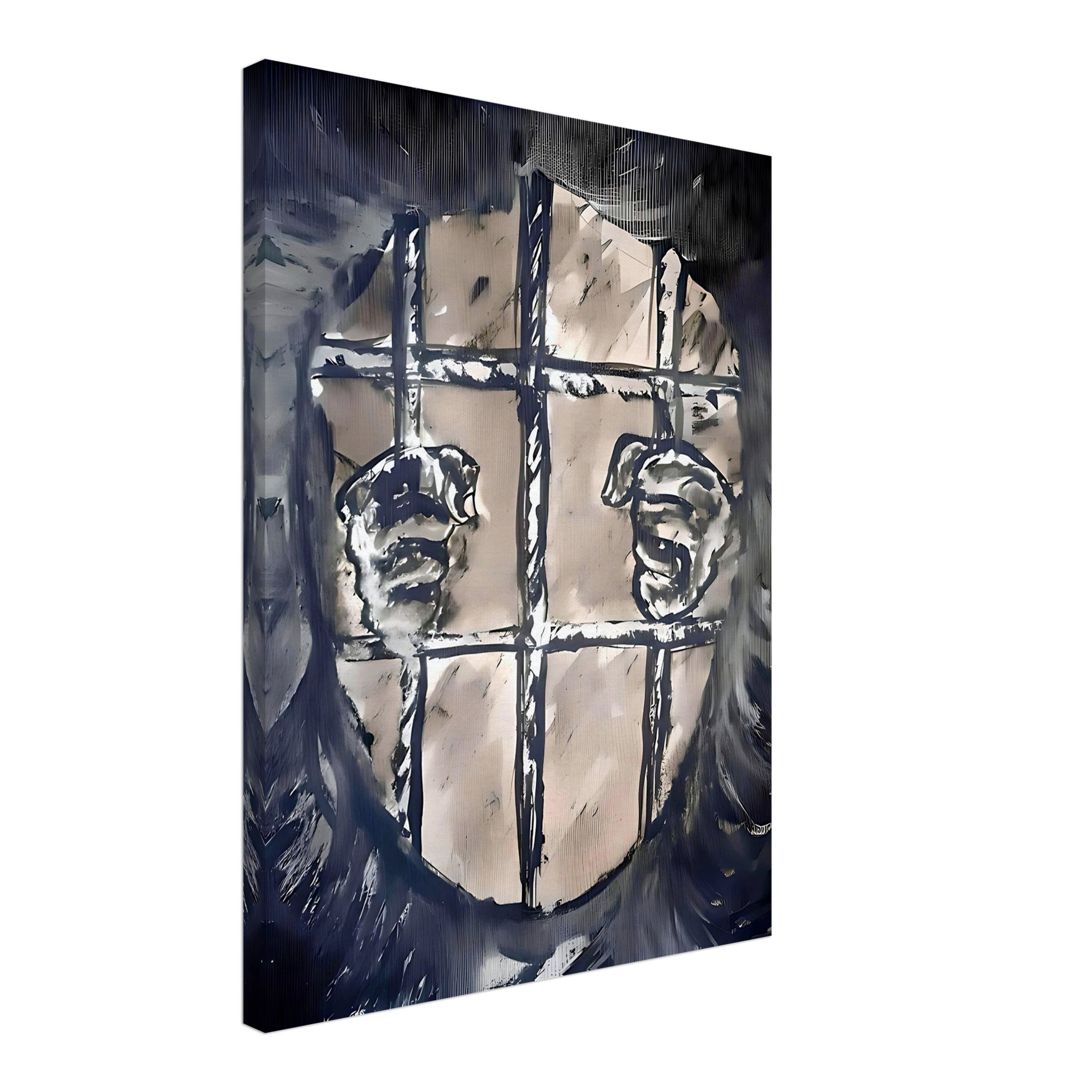The painting's composition is gripping, with the bars of the window acting as a stark boundary between the figure and the viewer. The face is depicted with an expression of longing or despair, further emphasized by the hands gripping the bars, a universal gesture of yearning for freedom. The use of shadow and texture around the figure gives the impression of depth, suggesting a darkness that extends beyond the canvas.
A muted palette of grays and whites casts the subject in a ghostly light, symbolizing the fog of mental anguish that can obscure one's sense of self. The bars stand out in stark relief, their solidity contrasting with the ethereal quality of the face and hands, underscoring the tangible nature of psychological constraints.
This artwork is rich in symbolism, with the barred window suggesting the limitations placed on the mind by internal or external forces. The hands gripping the bars could represent the struggle to break free from these constraints, while the obscured face might denote the loss of identity that can accompany such imprisonment.
"Prisoner of My Mind" evokes a profound sense of empathy and introspection. It captures the isolation that comes with internal struggle and the universal desire for liberation from one's own thoughts. The image may stir a sense of solemn solidarity with those who have faced similar battles, as well as a hopeful resolve that barriers, no matter how formidable, can be overcome.



